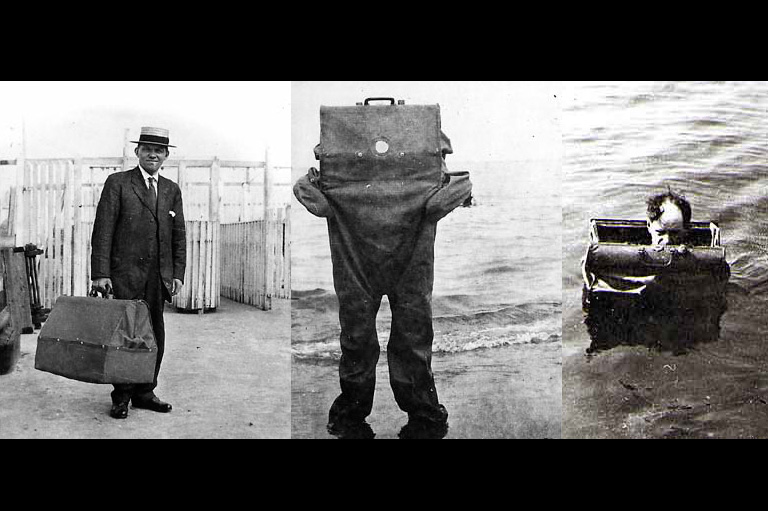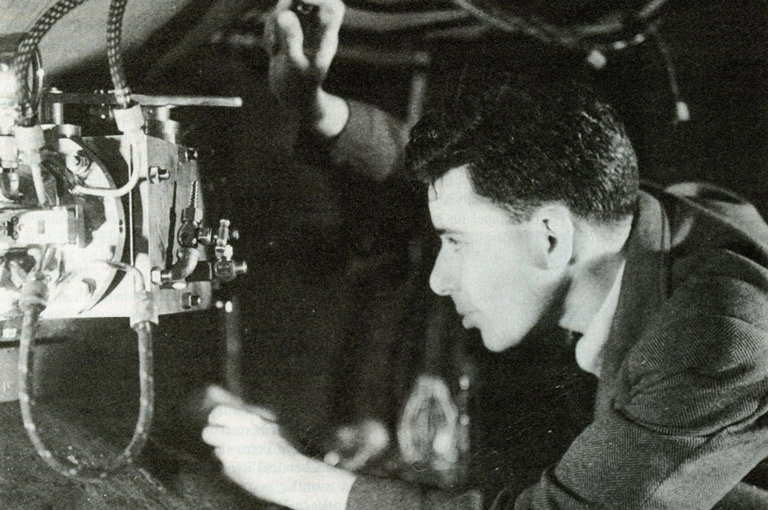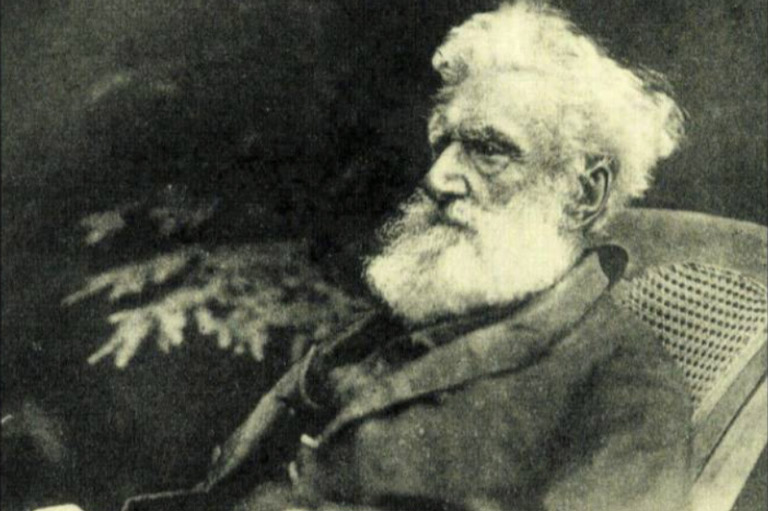Lifeboat Suitcase

When the Titanic sunk in 1912 south of Newfoundland, the world mourned the deaths of more than 1,500 people, and were outraged by the news that there were not enough lifeboats for all of the passengers on board. As a result, more stringent regulations were established for the number of safety vessels a ship had to carry. But a Canadian inventor had his own idea: passengers could carry their own personal lifeboats — in their suitcase.
Far from any ocean or large body of water, John Edlund (1874–1957) of Claresholm, Alberta, set to creating a device that would ensure the safety of every ship passenger who carried one. Edlund, born in Norway, was a former sailor who had survived three shipwrecks before settling on the Canadian prairies. Moved by the tragic sinking of the Titanic, he developed a personal, full-body, life preserver suit, designed to fold right out of a valise.
If a ship’s passengers were threatened those with such a case could open it, unfold the attached waterproof suit, and climb in. The preserver’s leg and arm flippers made it easy for its wearer to walk along the ship’s deck and enter into the water. The bag itself protected the swimmer’s head and upper body, and a small glass looking-hole let the swimmer see where he or she was going. The device, complete with airlocks, was said to keep its user dry and safe for up to four days, and even had room for some food. And, of course, when not housing a human body, the tote could store clothes and other, more typical, travel items.
Edlund was offered a small fee for his design, but turned it down to pursue a market himself — to no avail. The safety suitcase was profiled in newspapers and magazines across North America, and there was notable interest in it during the First World War, but Edlund’s invention never flew (or sailed, if you will).
Advertisement
Themes associated with this article
Advertisement
You might also like...

Canada’s History Archive, featuring The Beaver, is now available for your browsing and searching pleasure!








